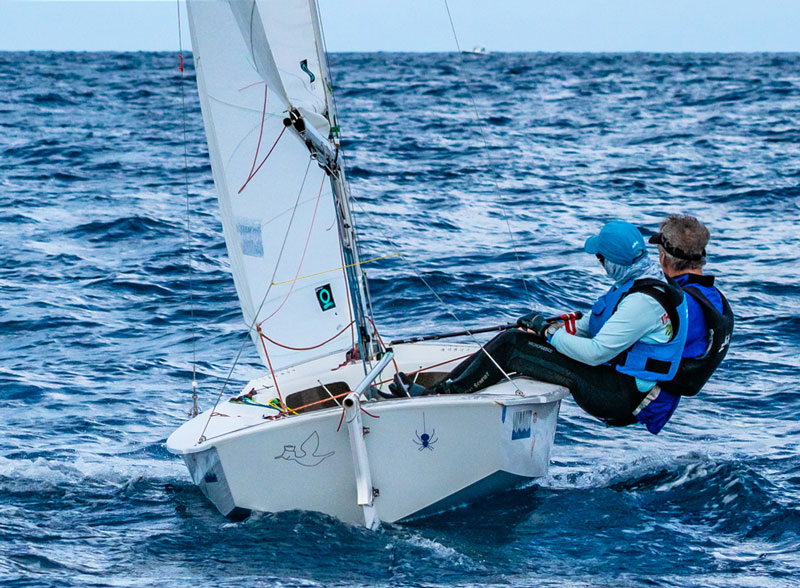Recently I spent four days training ahead of a three day regatta, which sparked several nerdy sailing articles* as well as—more surprisingly—some great big-picture thoughts about writing. Working with three of the top four finishers—all of whom were very open to sharing—and ably herded by coach Paul, it was the best of cooperative competition: try really hard to beat each other each day, and then share what had worked (or not) with the group afterward. As Snipe veterans, we were all pretty dialed in on basic settings, so we spent our time on pesky details I won’t bore you with here. What I want to focus on instead is what all those details add up to: a hard to define quality I’ll call “style.”

Style evolution
In both books and boats, style is highly personal—and hard to see in ourselves. After decades racing against the same skippers, I can recognize each one of them from across a hundred yards of open water, just by how they sit in the boat and hold the tiller. On video, though, my own posture was unfamiliar. (Do I really slouch that much sailing downwind?)
In writing, it’s easy to see what works (or doesn’t) in other people’s word choices—and quite hard to see the tics in our own.
What I was reminded of during that training camp is that our styles can evolve, once we decide the benefits are worth the effort. With enough time and practice, muscle memory can be retrained. I can learn to sit up straight downwind; my competitors can learn to steer more subtly—or, in one case, more aggressively.
Devil’s in the details
What we think is “just how we do things” is actually the sum of many lessons accumulated over years and years of training. Pre-conceived notions of how a sentence should read, what the word order should be, and how we “should” write, lock us into old habits.
Here’s the important part: even the over-50 crowd can be re-programmed. Discovering an unlikely word combination or writing from a different point of view can be as enlightening as discovering a new way to hold the tiller—and might just take us to unexpected places.
Several multi-book authors have said that it never gets easier to write their next novel, because they are always trying to push themselves and use the lessons learned from the last one. That, too, carries over to sailboat racing: our expectations for the next regatta are set by the last one.
Lessons Learned
All these links between the physicality of sailboat racing and the cerebral challenges of writing might seem a stretch, but all I know is that the chance to dig deep into one aspect of my life (competitive sailing) taught me almost as much about another (writing). Anything we take seriously and want to get better at will require growth and learning—which may demand a style update. I’ll leave you with a few final thoughts:
- You’re never too old to learn, but
- You can definitely be too stubborn (at any age)
- Studying the styles of others can be very useful, but
- Copying doesn’t work
- Focus on learning a new detail, rather than a whole new style
*Read the nerdy sailing articles on SnipeToday
For more great photos of Snipe sailing, cool waves, and other great subjects, visit PaulCroninStudios.
Got a thought about style and how to keep learning even as we age? Share it in the comments below, or email me: carolncroninATgmailDOTcom. Thanks for reading!